The 2023 Chevrolet Corvette Z06 Is Astonishing
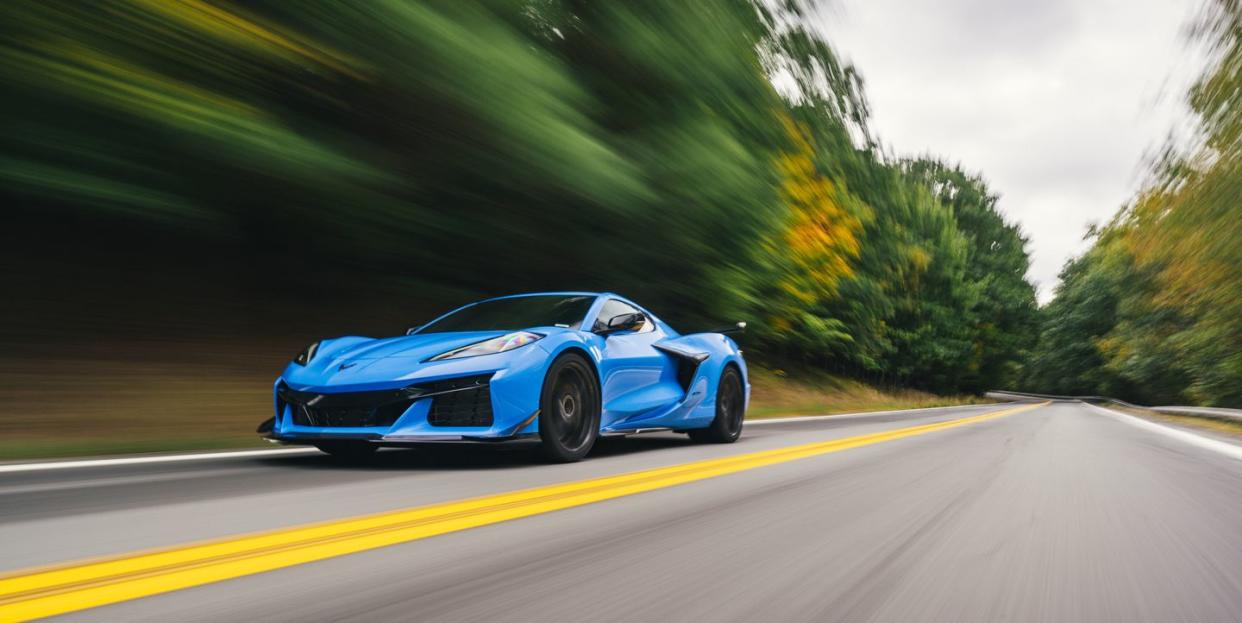
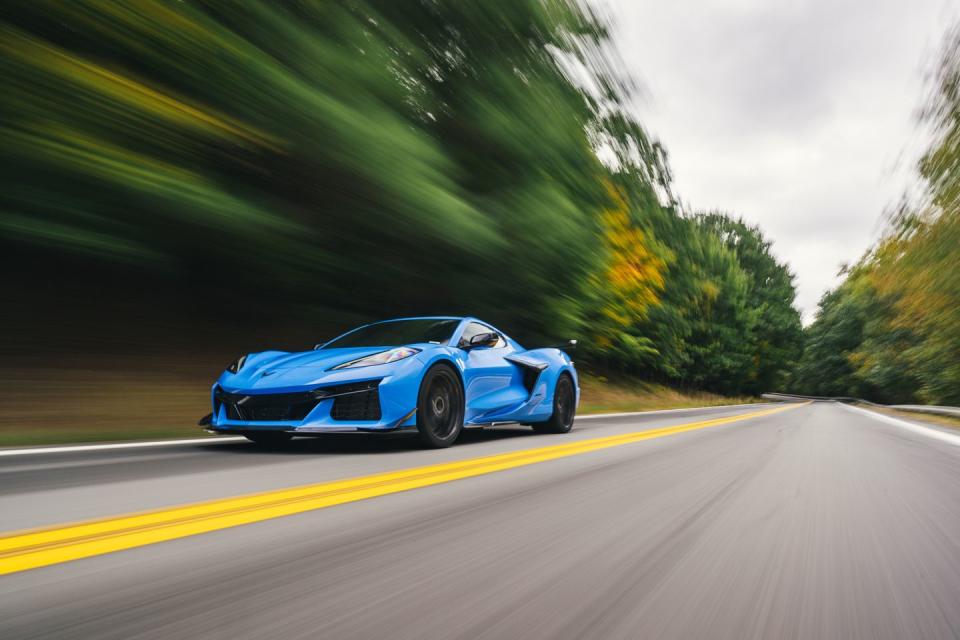
Let’s get the criticism out of the way. The 2023 Corvette Z06 we sampled had some suspect panel gaps. In the spec provided, this car cost $162,000, so you’d expect top quality everywhere. The steering wheel is still an awkward square shape that makes it tough to find a comfortable grip. The interior is leagues better than every generation before, but the line of buttons for the climate control can be inscrutable in direct sunlight, and the wall it creates between the driver and passenger is still annoying. The dual-clutch gearbox will still occasionally deny downshifts.
That’s it. The new Z06 is an unbelievable car. An inherently special thing that feels it at any speed, with a presence just sitting still that cars three times its price wish they had.
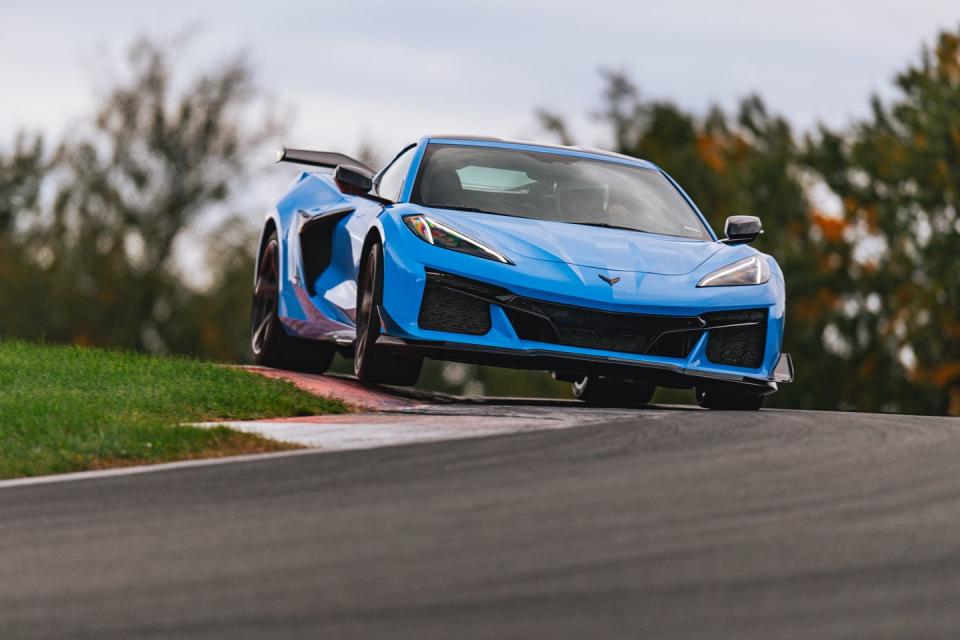
When we first drove the C8 Corvette in 2019, we had mixed feelings. We loved that Chevrolet finally had the audacity to put its long-running sports car on a mid-engine platform while maintaining the hallmarks and usability of the original. Even though it was such a radical departure from every Corvette before, it didn’t feel appreciably different, like it wasn't taking full advantage of the shift in platforms. Thing is, the shift to the mid-engine was never for the base car.
“The Stingray is super nice, and it drives like an all-wheel-drive car in a lot of conditions,” Corvette executive chief engineer Tadge Juechter says. “It's always got traction, which is really nice. But the benefits of the architecture shine when you've got more power on board.”
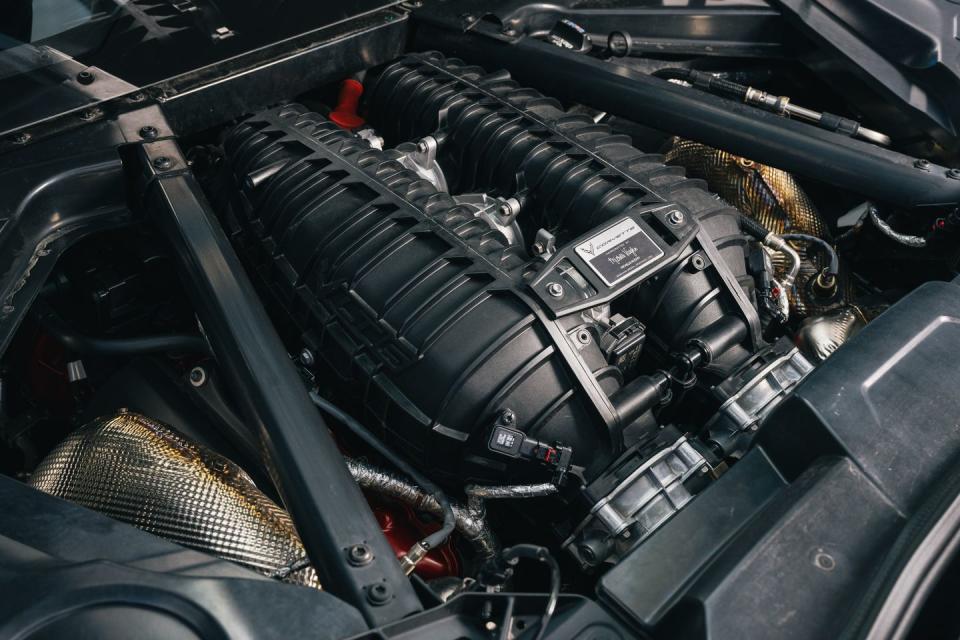
The Z06 and its brand new, 670-hp V-8 lets that mid-engine architecture shine. It also looks far better than the Stingray. The bigger wheels and tires, aggressive aero, and wider body make it look squat and sinister, far less awkward than the base car.
It doesn't feel much like a Corvette when you start it. The small-block bark is gone, replaced by the high-pitched insanity of the brand new 5.5-liter flat-plane crank V-8, the first Corvette-exclusive engine since the DOHC LT5 from the 1990s ZR-1. It makes 670 hp at 8400 rpm and 460 lb-ft of torque at 6300 rpm, notably higher revs to produce max power than the small block. It drives and sounds hugely exotic, with a higher-pitched wail than the other recent American flat-plane crank V-8 in the Mustang GT350. It revs to 8600 rpm and will pull so manically to redline that it feels like it can go for another 1500 rpm.
That’s connected to an updated version of the Stingray’s eight-speed DCT, with a shorter final drive and a six-plate clutch for the odd gears, along with other internal improvements that will trickle down to the base car. Upshifts are lightning fast, the gearbox seemingly built for this engine. Downshifts are also quick, though they are occasionally denied and forgotten. That old refrain about Porsche's PDK being better is exhausting and cliche at this point, but it’s still true.

This particular test car was loaded with every go-fast goodie (and some just for appearance), including the aggressive aero of the Z07 package, carbon brakes, and the optional 20x10-inch front and 21x13-inch rear carbon fiber wheels and Michelin Pilot Sport Cup 2R tires (275/30s up front, gigantic 345/25s out back). On Monticello Motor Club’s North Course, it’s a track monster, but also accessible to any skill level.

A lot of credit for that accessibility has to go to the team responsible for chassis controls. The front end is extremely responsive and connected, but it never works counter to the rear end. The 40:60 weight distribution of the nearly 3500-lb Z06 is key here, giving a lightning turn-in (albeit with little steering feel) but also allowing the Z06 to put its power down without any thought of it biting or breaking away unexpectedly. The diff tune lets you get straight back to power, and then there’s Performance Traction Management, or PTM for short, Chevy’s truly wonderful traction control system.
Instead of intervening at the wheels using the brakes, PTM cuts spark, which is more predictable and consistent than a TC system that uses brakes. It’s a true motorsport setup, one that can sound like gunfire when it's engaging. What it does—like in other Corvettes and the Cadillac Blackwings—is take every system into account and let you mat the throttle earlier and with more confidence, restricting power to keep everything in line and make the car as fast as humanly possible. Accessing PTM can be slightly clunky through the rotary knob on the center console. Moving those controls to the steering wheel, as Cadillac did, could be a good way to make sure they get more use.
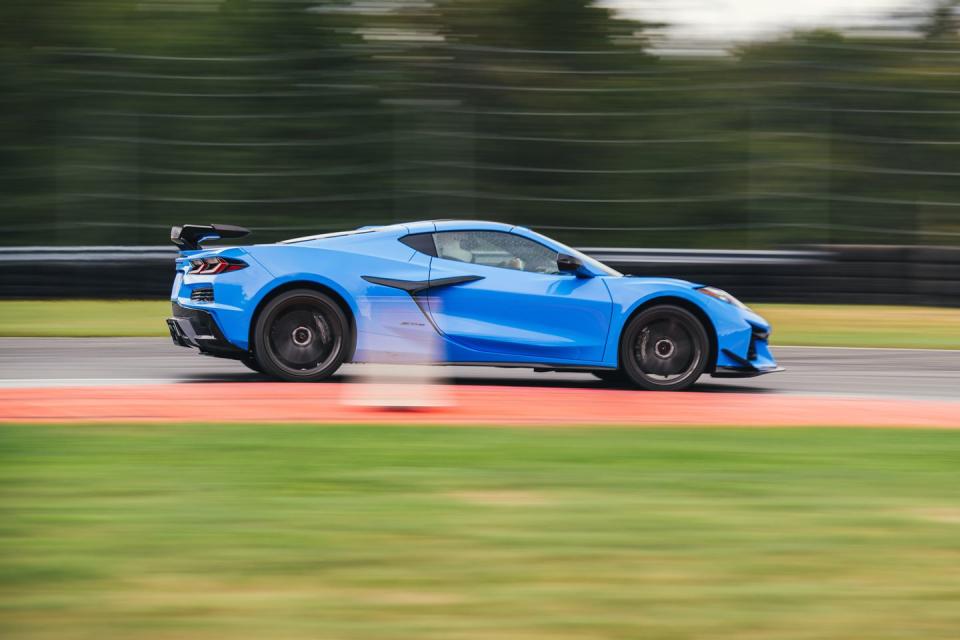
And it’s fast. On Monticello’s shorter layout, the Z06 was hitting 140+ mph on the back straight and lapping within a second of the Mercedes-AMG GT Black we tested at our car of the year test last year, a Nürburgring record holder with 50 more horsepower and gobs more downforce. There’s definitely more time in the Z06. Braking performance might be the killer app, with repeated stops from mid-triple digits greeted with high initial bite and no signs of fade after multiple laps. Superior ABS tuning also worked with the brilliant Magneride suspension to eliminate any signs of lockup on Monticello’s bumpy braking zones. The adjustable brake feel allowed by the brake-by-wire system wasn’t disconcerting either, instead feeling natural and linear.
Above: A lap of Monticello's North Course in the Corvette Z06. And yes, it can definitely go quicker.
The remarkable thing is how consistent and accessible all that speed is, and how you can stay far below its limits and still feel engaged. So many high-performance cars isolate you from the experience unless you’re on the edge. The Z06 makes you part of the equation at any speed, the wild engine and communicative controls keeping you involved at all times. That all goes back to the targets Juechter set for the team.
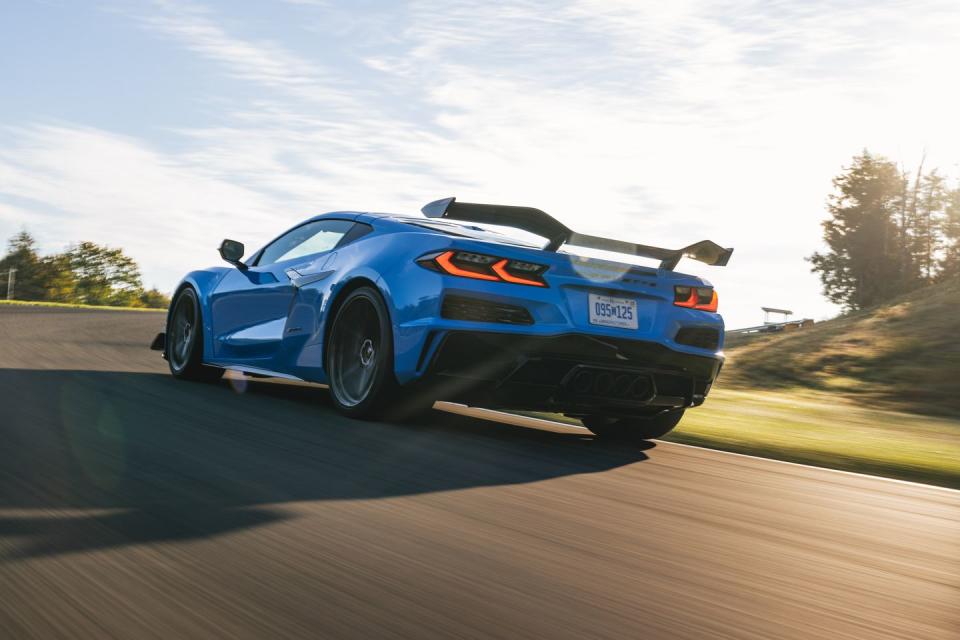
“We always had a Ferrari 458 and GT2 RS in tow (during testing) and the mission was to try to combine the soul of the Ferrari with the clinical speed of the Porsche,” Juechter says. “We really admire those cars and tried to get the best of both into a single vehicle. That was our objective.”
It’s more of the same on the road. Even at half throttle, the engine has character, and leaving the gearbox in manual mode gets you as close to a real manual as possible. It’s not quite as satisfying as the dance of clutch and throttle that the C7 would require, but it’s close.
Now, if you’re looking for a boulevard cruiser, the Z06 isn’t the car for you. Our Z07-pack car was particularly stiff, with front spring rates up 200 percent and rears up 100 percent compared to a Z51 pack Stingray. On a rough road, which the Northeast has plenty of, and with the Cup 2R and carbon wheels, it will feel harsh and can tramline with any imperfections. On smooth pavement, though, it’s well damped. The softest setting, Tour, is your friend. I’d expect the base car to be more comfortable, especially since it’ll be on less aggressive rubber and have toned down spring rates.
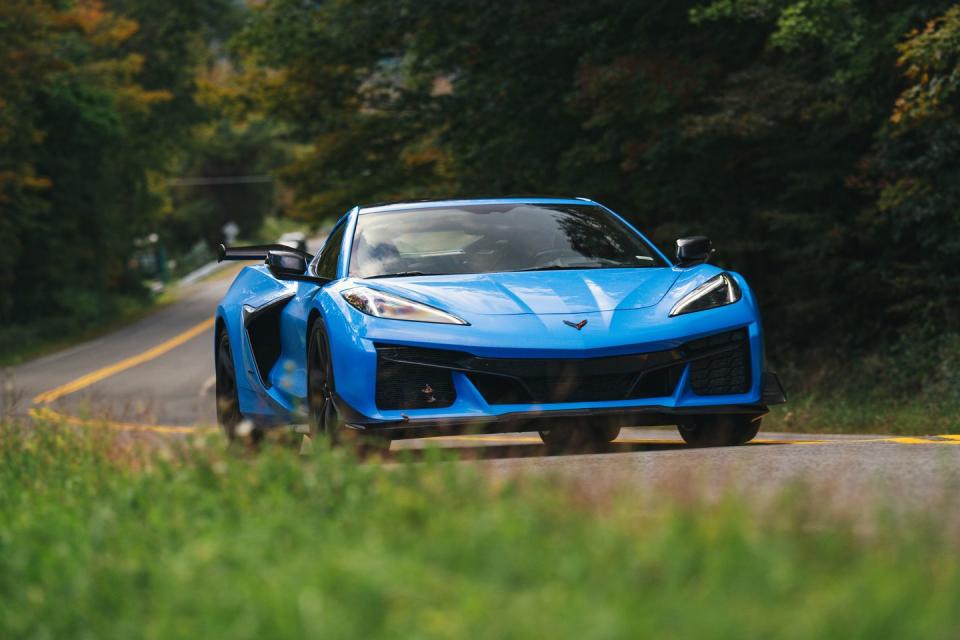
Everything else that was so good on track transfers to the road. The steering is still quick, the engine still a masterpiece, the gearbox denies fewer shifts, and it's still fun even when you go slowly. Even though this is a track-oriented car, most owners will have it on the road, so it still needs to function like a Corvette. It’ll sit on the highway at 80 mph in eighth gear, quiet and comfortable. The rear wing on the Z07 pack could’ve been higher, but it would’ve restricted rear visibility as well as trunk access, which would make it particularly hard to store the top in. And if you’re wondering why this hardcore track car doesn’t have a fixed roof, it was designed as a targa first and buyers want to have it all. If the base car has a targa, those getting the Z06 want one too. Why restrict it?
There are a few elephants in the room, I’m sure. The $162,000 price tag on our test car appears pretty high, especially for a car that was frequently considered a bargain alternative. Except our car was a fully loaded 3LZ Z07 with all the carbon options. It’s essentially the top price for the Corvette. You can get out of the dealer for far less with a 1LZ pack car with the Z07 options, if the dealer will sell one to you at MSRP. Good luck with that.
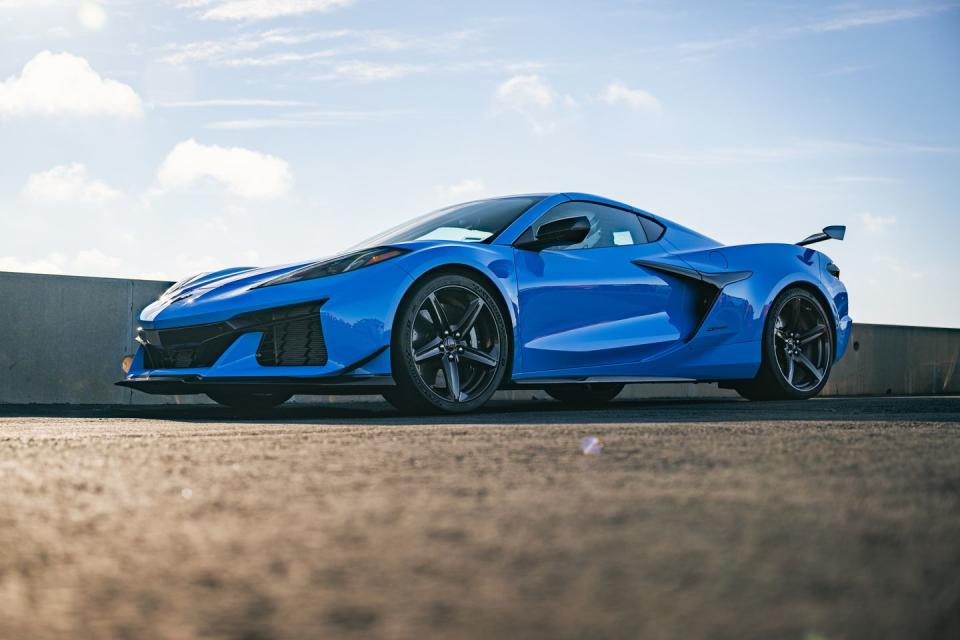
Every time I got out of the Z06, I was astonished. Ferrari, Lamborghini, Porsche, and McLaren have been working on mid-engine supercars for years, yet it's Chevy that crams more value, theater, and excitement into that layout. Of course, that shouldn’t be a surprise. GM’s track record with performance cars has few blemishes, yet people always want to put them down based on perception, not experience. That’s the case here, and with the proliferation of turbocharging and hybridization in performance cars, this was also likely the very last chance the Corvette team had to make something this exotic, this wild, this special. The mid-engine move finally makes sense.

Correction: An earlier version of this review said that spring rates were up 300 percent front, 200 percent rear. It's actually 200 percent front, 100 percent rear.
You Might Also Like

